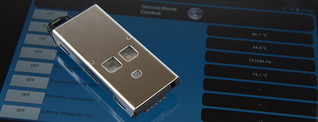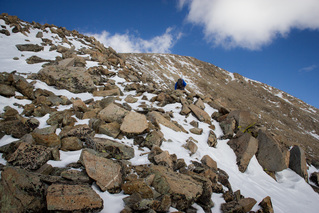 In my previous post I discussed the benefits and drawbacks of crowdsourced scientific data collection, but I focused on very basic "see and report" methods. With sophisticated hardware technology getting cheaper every year it is now becoming more common for the general public to be involved in more high-tech scientific monitoring. The image above shows the most recent iteration of the Sensordrone, which was launched from a kickstarter campaign. This device makes use of the immense processing power of mobile devices to make sense of data. While most of the features of the Sensordrone are somewhat frivolous, it does have some potential uses for scientific endeavors e.g. precision gas, temperature, and pressure sensors. The device also has an expansion connector that would allow other sensors to take advantage of its bluetooth interface. I think consumer-level technology like this has tremendous potential for widespread environmental monitoring in the future. Another great example of the power of citizen monitoring is the Air Quality Egg. This application is much more focused on environmental concerns than the Sensordrone and could be very useful in urban areas. "The Air Quality Egg is a sensor system designed to allow anyone to collect very high resolution readings of NO2 and CO concentrations outside of their home. These two gases are the most indicative elements related to urban air pollution that are sense-able by inexpensive, DIY sensors."
0 Comments
 One of the most amazing aspects of the modern smartphone age is the fact that everyone now has an extremely accurate GIS device right in their pocket at all times. There are many institutions that are taking advantage of this in terms of "big data" but what is intriguing to me is the potential to crowdsource scientific data. One organization, Adventurers and Scientists for Conservation, is taking full advantage of the concept. As a self-diagnosed adventurer I think it is especially cool to have the opportunity to contribute to research while exploring remote and extreme locations. I got a chance to report sightings of American Pika while climbing Mt. Democrat last November. In the picture above you can see where the Pikas were living, popping in and out of the talus and boulders on the mountain side. Pika are considered bio-indicators for climate change because they cannot survive in ambient temperatures above 78 degrees fahrenheit. Recording latitude, longitude, elevation, and time of day of Pika sightings will provide valuable information for ongoing climate studies that include remote locations that do not benefit from permanent weather stations. Crowdsourcing data collection has many benefits but I think there is one glaring weakness. The fact that most of the participants in projects like these are not scientists and will not be as thorough in their investigation. I do believe this weakness can be circumvented by researchers by asking the right questions and providing extremely clear and succinct instructions for participants, designed to be carried out by "citizens." This is an exciting time and I can't wait to see what comes out of the projects sponsored by ASC. I encourage anyone reading this to participate if they get the chance. |
Alex KeyScientist, photographer, and outdoor athlete based in Denver, Colorado. This blog is a place to share science-related news and ideas that I find interesting. Archives
June 2014
Categories
All
|

 RSS Feed
RSS Feed